
Admittedly, the paint job on our 1969 Dodge Charger R/T project car, “Brazen” was looking a little worse for wear. Completed 10 years ago by a friend and for a less-than-shoestring budget, the paint was pretty thin in some spots and definite sanding marks could be seen from beneath the paint. But for less than $4,000, we couldn’t complain – especially when the sun hit it just right. Moreover, building a car around a completed paint job proved problematic, as dozens of scratches, dings, and chips began to accumulate. Even with the use of padded fender covers, the residue of belt buckles, hastily dropped tools and the like left their mark. We joked that Brazen was a “solid 15-footer” and to the observant eye, we might’ve added another 5-feet to that estimate.
Since taking the car down and prepping for another bout of paint jail was out of the question, we looked for other avenues to explore. We had already been wowed by CarMedic’s Tabor Thayn’s skill at removing a handful of particularly prominent dents without requiring body filler and blending in a patch of new paint, but there were places that touching up and filling in paint chips and scratches were simply a must. We reached out to AutomotiveTouchup, whose name couldn’t be more to-the-point. While a visit by any automotive parts retailer might land you a selection of touch up paint pens, the quality of the paint and whether its blended to match your particular hue is questionable at best. Conversely, AutomotiveTouchup’s dedication to providing professional-level and paint code-correct paints is remarkable.

Above: The AutomotiveTouchup kit is surprisingly comprehensive with surface preparation wipes, cotton applicators, a packet of various-grit sandpaper, the brush-in-bottle paints, and paint pens, all blended to your car’s exact factory paint code.
Above: Focusing on one particular divot in the driver’s side fender, we prepared the surface using one of the supplied wipes to remove any oil, wax or contaminants.
The process of ordering begins with AutomotiveTouchup’s digital search engine allowing you access to a massive database of factory OE paint codes to match the year, model, and make of your vehicle. For Dodge, AutomotiveTouchup’s records date all the way back to 1935, which is staggering. They even offer instructions on how and where to find your car’s particular paint code if you don’t know it off-hand. Once you’ve got your paint color code inputted, you’re prompted through a drop-down menu asking which of the several application methods you’d prefer; be it their touch up paint bottles, spray paint cans, ready-to-spray paint, or paint pens. (They even offer ready-to-paint pint, quart and gallon sizes.) The size and scope of the applicator primarily depends on the area you’re looking to cover. As we were filling in various paint chips, we opted for their touch up paint bottle and pen.
Each order is mixed, bottled and packaged individually, and comes within a week or so of ordering. Our touch up paint bottle was far more than a mere vial of paint, rather the bottle comes as a kit, supplying you with primer, color code-matched paint, clear coat and even a smaller bottle of rubbing compound all to perfectly blend your touch up as best as possible. Our paint pens came equally as complete, including felt-tipped pens for primer, paint and clear as well. Additionally, we were sent a package of surface preparation wipes and even a small package of varying grades of fine sandpaper. Supplied with everything we would need, the hardest part would be blending the metallic paint well enough to look natural.
Above: Once we taped off the portion of the fender we were going to be working on, we started by applying the primer.
Above left: Although each bottle comes with a brush attached to the cap, we used the cotton ball-topped applicators because they allowed us a more precise dab. Above right: Once the primer cured, we used a razor to cut down on the flaked edges of the paint before applying the new color.
Focusing on one particular gouge in our driver’s side fender, we started by cleaning the surface with the towelettes. Next, we taped off the area where we’d be working as accidents can happen. Although each paint bottle came with a brush attached to the cap, the fan of the brush was far larger than the chip we needed to fill, so we opted to use the tiny cotton-topped applicators supplied with our kit. First, filling the chip with primer went smoothly, as the cut was deep enough not to puddle. Once the primer cured, we took a razor blade to chip off the highest leading edges of the paint, this will allow us to fill the divot easier. Our next step was paint; as mentioned, metallic is the hardest to blend and is best applied in stages. We dabbed a primary layer and returned two more times over the next hour or two.
Since paint has a tendency to “build up” we took a small square of the finest grit in our kit (1500 grit), rolled it tightly and lightly “knocked down” the paint. To remove any scratches, we used a small dab of the rubbing compound and a cloth and smoothed the surface as best as possible before applying the clear coat. At several stages in the process did we attempt to use the larger felt-tipped pens but returned again and again to the small cotton “Q-Tip” applicators. We did find the best use for the pens when covering a larger chip or those on edges (around the grille or along the hood). We gave the clear coat another 24 hours to cure before passing over with a softer polishing compound and were pleased with the results.
Above left: Paint has a way of stacking or building up, so we applied our T5 Bronze in three separate layers, letting them cure an hour or two between applications. Above right: Once satisfied with our painting, we knocked down the paint with a tab of 1500-grit sandpaper and cleaned up with some of the supplied rubbing compound.
Above left: Happy with our sanding and polishing, we applied the clear coat and allowed it to cure for 24 hours. Above right: Although visible here through specially-positioned lighting, the touched-up chip is almost completely invisible to the naked eye under natural lighting.
Only in specific lighting could our fix be noticeable and at close range. Otherwise, the patch is indistinguishable from the rest of the fender, which made us very happy. When sealed, the touch up bottles and pens are expected to last years in cool, dry storage. AutomotiveTouchup’s bottles and pens are an ideal tool to keep in one’s arsenal particularly if you’re fond of driving your classic regularly – or are looking to clean up the look of your daily driver. As prices vary per application, it’s best to visit AutomotiveTouchup‘s website and explore what might work best for you. Plus, you’ll find instructions, tutorial videos and much, much more all to help preserve the look of your Mopar.


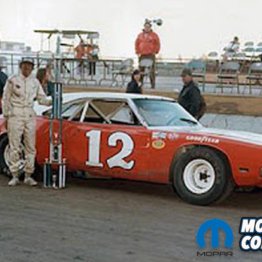

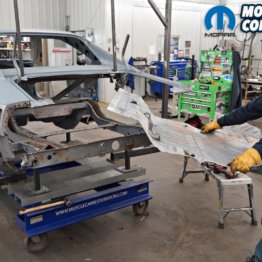

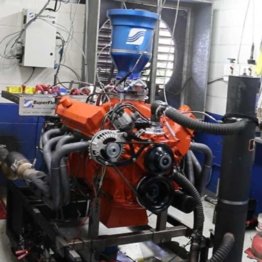
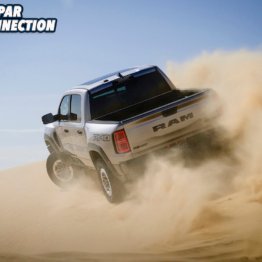























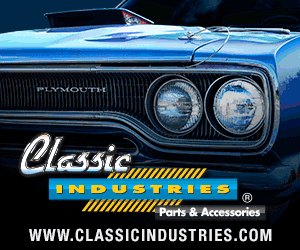



 Mopar Connection Magazine – The ONLY Daily Mopar Magazine © 2022. All Rights Reserved. Mopar Connection Magazine is the ONLY daily Mopar Magazine bringing you the latest Mopar news, technology, breaking news, and Mopar related events and articles. Find out the latest information about Mopar, Mopar products and services, stay up to date on Mopar enthusiast news, dealership information and the latest Mopar social media buzz! Sign up for the Mopar Connection Magazine newsletter for the latest information about new products, services and industry chatter. Mopar Connection Magazine is the best and only source you need to be a Mopar industry insider!
Mopar Connection Magazine – The ONLY Daily Mopar Magazine © 2022. All Rights Reserved. Mopar Connection Magazine is the ONLY daily Mopar Magazine bringing you the latest Mopar news, technology, breaking news, and Mopar related events and articles. Find out the latest information about Mopar, Mopar products and services, stay up to date on Mopar enthusiast news, dealership information and the latest Mopar social media buzz! Sign up for the Mopar Connection Magazine newsletter for the latest information about new products, services and industry chatter. Mopar Connection Magazine is the best and only source you need to be a Mopar industry insider! by
by